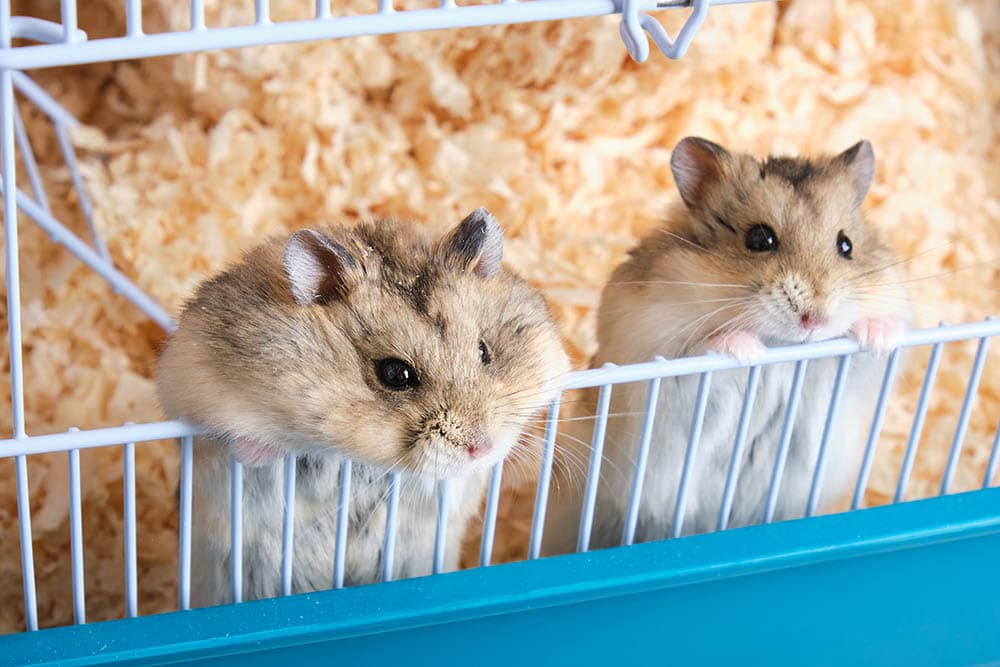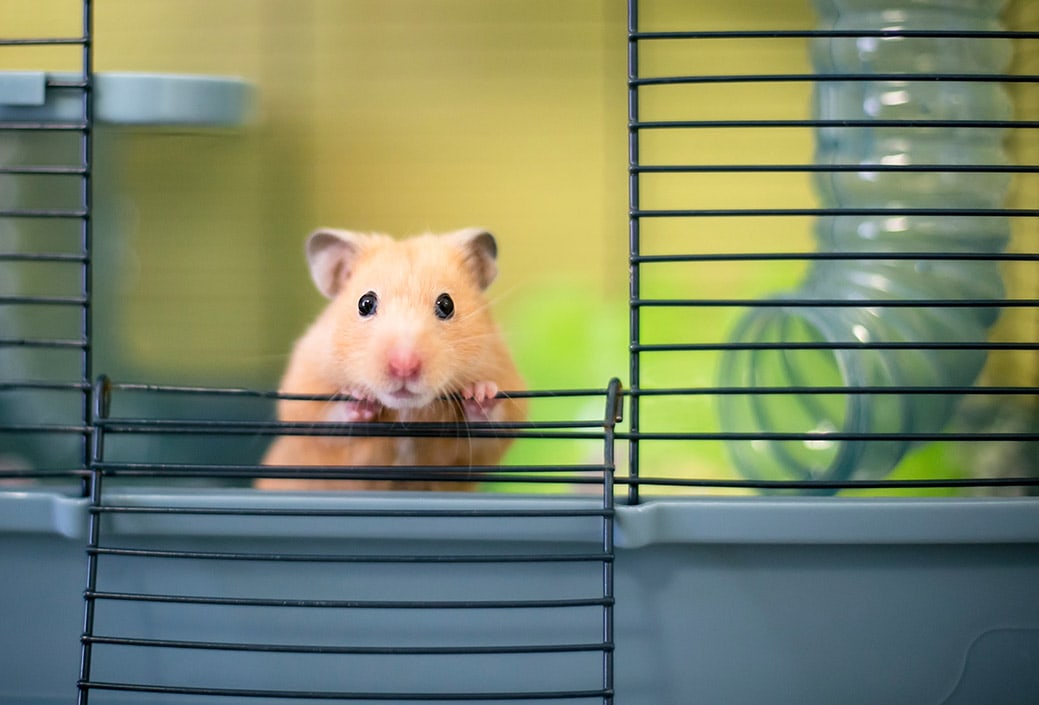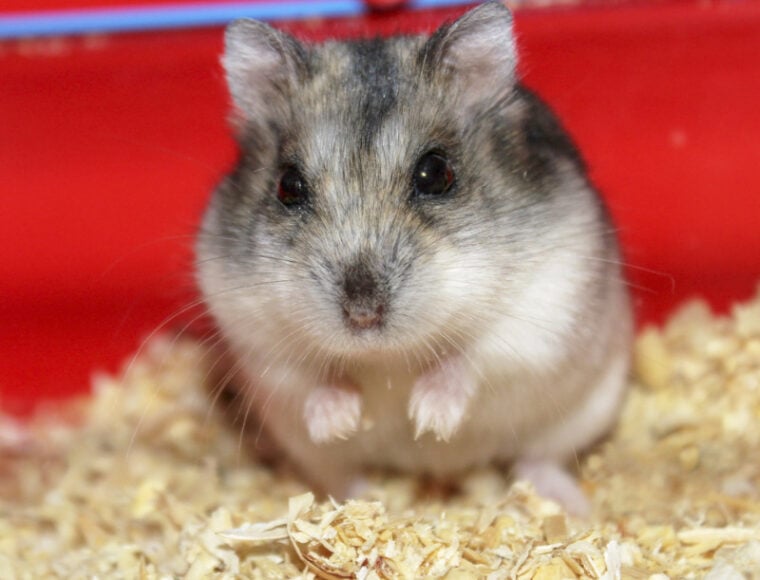
Click to Skip Ahead
How good is a hamster’s eyesight? This is a question that many hamster owners and enthusiasts find themselves asking. The short answer is: not very good during daytime and better with low light conditions. Hamsters have well-developed senses of smell and hearing, which help them navigate the world. However, there’s much more to this story. In this comprehensive guide, we will delve into the fascinating world of hamster anatomy, focusing on their eyesight and providing useful tips to ensure your furry friend stays healthy.
Basic Hamster Eye Anatomy
Hamster eyes are unique in their structure, which is perfectly adapted to their nocturnal lifestyle. They are small and protruding, and their location gives hamsters a field of view of approximately 270 degrees.1 This characteristic is essential for these prey animals, as it helps them spot potential predators quickly.
At the back of their eyes, they have the retina, where the photoreceptors (light-sensitive cells) work. There are two types of photoreceptors: rods and cones. Put simply, rods are responsible for night vision and cones for color vision. Hamsters’ retinas have approximately 97% rods and 3% cones, which explains their nocturnal habits.
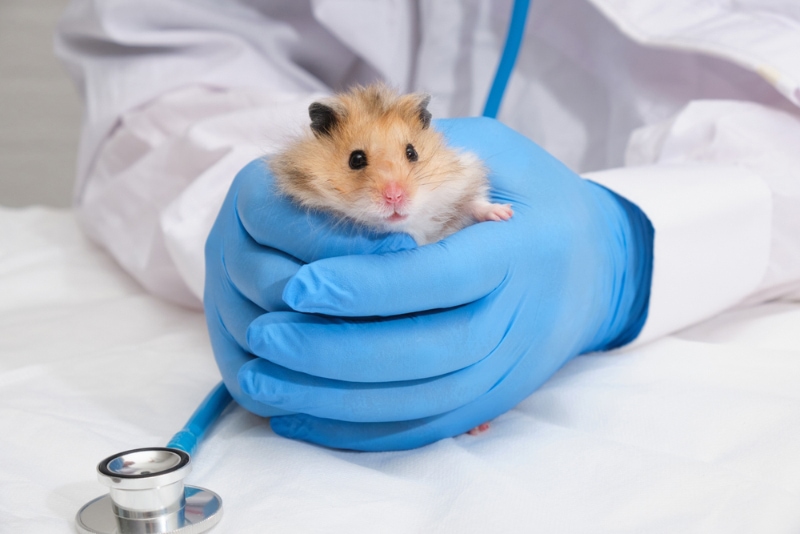
Hamster Vision Range
When it comes to a hamster’s visual field, it extends approximately 270 degrees, which compared to the 180 degrees humans have, it is quite impressive. On the other hand, hamsters’ visual acuity is quite poor. It is estimated that they can see approximately with a visual acuity of 20/2000. The visual acuity of normal humans is 20/20. The translation to this is that a hamster must be approximately 100 times closer to an object to see it as sharply as we do.
Color Perception
The world from a hamster’s perspective is not as color rich as ours. Studies suggest that while hamsters can perceive some colors, their color perception is far less vivid and rich compared to humans. Their color vision is believed to be in the blue and green spectrums. This limited color perception is due to the types of cone photoreceptors in their eyes. Nonetheless, it’s a fascinating glimpse into how these adorable creatures see the world around them.
The Importance of Other Senses
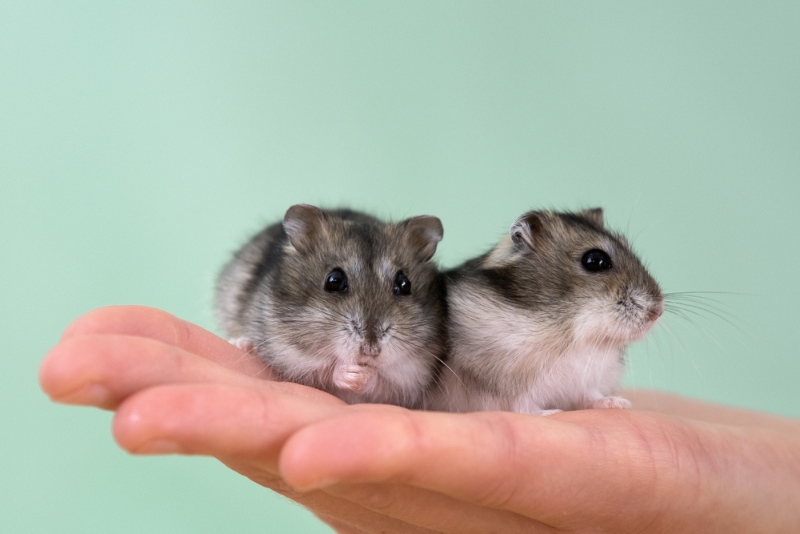
While vision plays a key role in a hamster’s interaction with their environment, other senses are equally critical for their survival and everyday activities. We’re now shifting our focus from their eyesight to other sensory systems – their acute hearing and remarkable sense of smell, paramount for communication, finding food, and sensing danger.
Smell
The sense of smell is not just important, but vital for hamsters. It’s their primary way of understanding and interacting with the world. Hamsters use their advanced olfactory abilities to distinguish between a variety of scents. This allows them to identify food sources, even in complex environments. It’s also a crucial tool in social interactions, helping them recognize potential mates or detect the presence of rivals. Moreover, hamsters use scent-marking to establish their territory, leaving behind a unique aroma that communicates ownership to other hamsters. Their sense of smell also alerts them to potential dangers, such as the presence of predators, ensuring they remain safe in their habitat.
Hearing
Hamsters are gifted with a great sense of hearing. This auditory sensitivity allows them to perceive high-frequency sounds that are completely beyond the human hearing range. Such a heightened hearing ability serves as a critical survival mechanism, alerting them to possible threats that may be lurking nearby. The slightest rustle or squeak can send a hamster scurrying for cover. This auditory acuity also enables them to communicate with each other using ultrasonic vocalizations that are imperceptible to us humans.
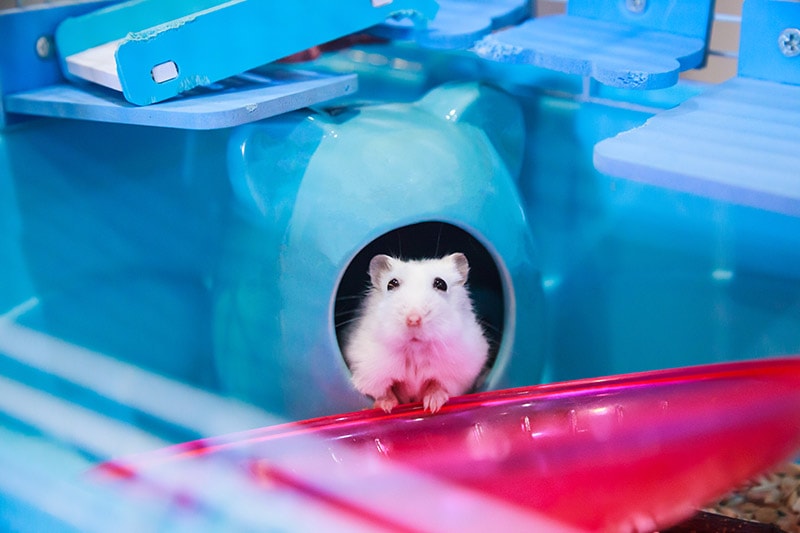
Touch
Touch, particularly through their whiskers, plays a significant role in how hamsters explore and navigate their surroundings. These whiskers, also known as vibrissae, are packed with nerve endings, making them highly sensitive to changes in their environment. As hamsters are primarily nocturnal and have limited vision, they rely heavily on these whiskers to maneuver around. The whiskers provide tactile feedback, helping hamsters detect and avoid obstacles, locate entrances to burrows, and even find their food. These tactile appendages essentially act as a hamster’s ‘hands’, giving them a sense of touch that guides them through their daily activities.
Caring for Your Hamster’s Eyes
While understanding a hamster’s senses is necessary for their well-being, it is also vital to pay attention to their eyes and their care. Hamsters’ eyes are crucial for their interaction with the world. This section will provide essential tips and guidelines on how to maintain your hamster’s eye health, ensuring they live a comfortable and healthy life.
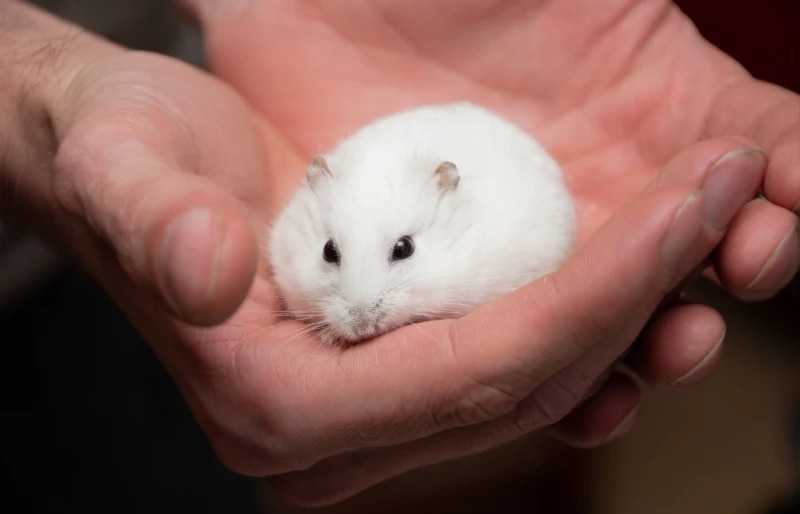
Regular Check-ups
Ensuring the health of your hamster’s eyes starts with regular check-ups. These don’t necessarily require a trip to the vet each time; instead, they can be done at home during your routine interaction with your tiny companion. Observe your hamster’s eyes closely for any changes in appearance or behavior. Signs of redness could indicate irritation or inflammation. Cloudiness in the eyes might be a sign of cataracts, a condition more common in older hamsters. Discharge from the eyes is often a sign of an infection or possible injury. In any of these cases, it’s crucial to consult with a vet promptly to ensure your pet gets the necessary care and treatment.
Clean Environment
A clean environment is vital to prevent eye infections and other health issues in hamsters. Their living area, particularly their cage, should be cleaned thoroughly on a regular basis. This includes removing old food, washing the cage with a pet-safe cleaner, and replacing the bedding. Bedding should be soft and dust-free to avoid irritating your hamster’s eyes. It’s also crucial to keep the cage in a well-ventilated area to prevent the buildup of ammonia from urine, which can also cause eye irritation. By maintaining cleanliness, you reduce the risk of bacteria growth and potential infections, contributing to the overall well-being of your hamster.

Balanced Diet
Feeding your hamster a balanced diet is another key aspect of maintaining their eye health. Hamsters must be fed a commercial formulated diet recommended by your vet. Diets based on seeds are not nutritionally complete and can cause health problems. Occasional treats should be high in protein and low in fat.
If you are considering giving your hamster any new foods, always introduce them gradually to avoid upsetting your hamster’s digestive system, and most importantly, make sure your vet gives you the green light for whichever dietary addition you are planning to make.
Conclusion
Life from a hamster’s perspective is quite different from ours. While they may not have the sharpest eyesight, they make up for it with their other senses. As pet owners, understanding these differences allows us to better care for our little friends and appreciate the unique ways they interact with the world.
Featured Image Credit: Vinokurov Alexandr, Shutterstock



